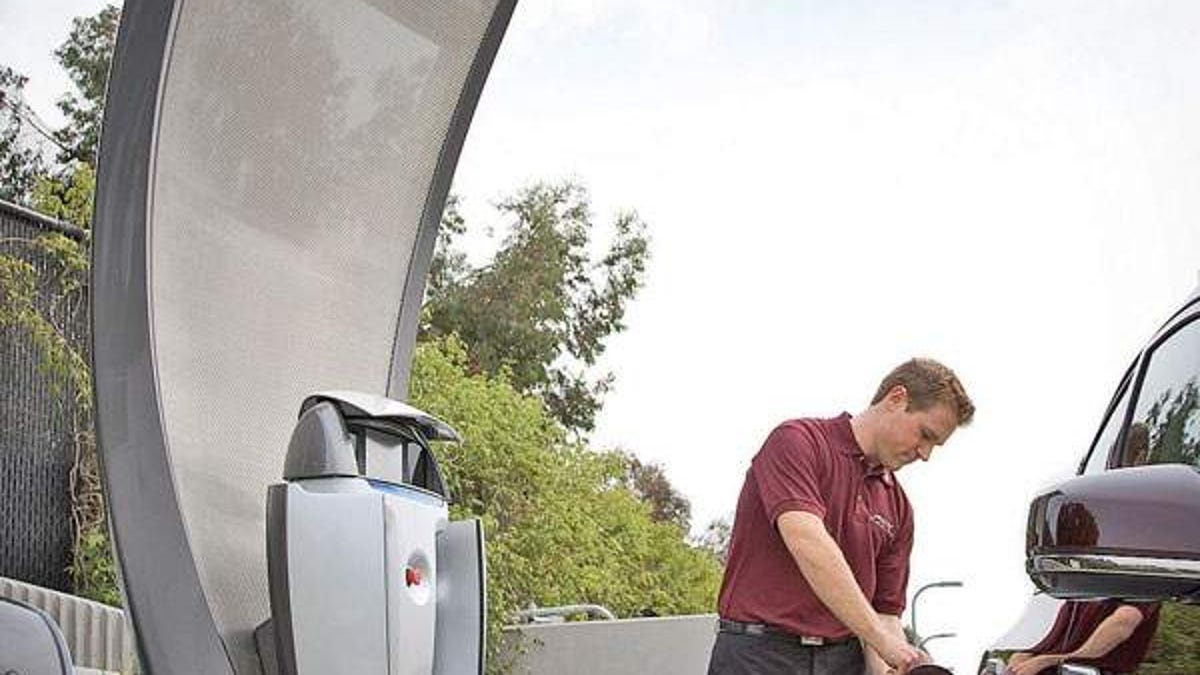Industry expects fuel cells on U.S. highways in 2015
Automotive News reports on upcoming fuel cell vehicles.

Today nearly all of the talk is about hybrid, plug-in hybrid, and battery electric vehicles.
But where are the fuel cell-powered vehicles that gained so much attention a few years ago? Closer to production than you might think--although in very small numbers.
"We will come to the market in 2015," says Bill Reinert, national manager of advanced vehicles at Toyota Motor Sales U.S.A. Inc.
That time frame "is not just us," Reinert adds. "You will hear that from General Motors, Daimler-Benz and some other people."
Automakers are going ahead despite the lack of a hydrogen refueling infrastructure--the long-standing obstacle to fuel cell growth. They hope that by 2015, refueling stops will begin to sprout up around the country.
And automakers are trying to find ways to stimulate the hydrogen network.
For instance, GM is partnering in Hawaii with The Gas Co. The utility plans to tap into its 1,000-mile utility pipeline system, separate the hydrogen from the synthetic natural gas and sell the hydrogen to refueling stations in Hawaii. The cost to add hydrogen fueling equipment is expected to be $300,000 to $500,000 per pump
Two advantages
Despite the formidable challenges, automakers favor the fuel cell because there is a huge twofold benefit: no need for petroleum and no emissions from the tailpipe. A fuel cell uses hydrogen to generate electricity through a chemical reaction and emits only water vapor through the tailpipe. Hydrogen is plentiful and can be derived from natural gas, methanol and even water.
The push for fuel cells also is fueled by the realization by automakers that hybrid, plug-in hybrid and battery-powered vehicles collectively will be unable to meet stiffer CO2 regulations later this decade.
"You need a complete portfolio of advanced propulsion technology," says Charlie Freese, executive director of GM's global fuel cell activities.
The 2015 time frame is the result of advancements in technology that make the fuel cell more reliable, smaller and less costly.
"The engineering has advanced to the point that we believe we can make money on these cars, that we don't have to subsidize them, and price in the $50,000 area," says Toyota's Reinert.
Freese says several thousand fuel cell vehicles from GM are conceivable in 2015, but he will not estimate price
Quick refills
The fuel cell power train consists of four elements:
1. A tank that stores hydrogen.
2. A fuel cell stack that converts hydrogen and oxygen into heat and water, creating electricity.
3. Lithium ion batteries that store the electricity.
4. A power unit that controls the flow of electricity to the electric motors that propel the vehicle.
Unlike a battery-powered vehicle that can take six, seven, eight hours to recharge, a hydrogen refill takes about 3 1/2 minutes. Also, while a battery-powered vehicle has a range of about 100 miles depending on conditions, Honda's Clarity, a mid-sized sedan, can travel about 240 miles on hydrogen. GM expects 300 miles for its fuel cell car.
As part of a Honda test fleet, 20 consumers in California have been leasing the Clarity since 2008, paying $600 per month. The company plans to introduce a fuel cell vehicle in 2018.
Honda is also testing a solar-powered unit that creates hydrogen by electrolyzing water. It could be used at homes and businesses.
Automakers have been able to reduce the fuel cell's size by as much as 50 percent, compared with cells they were testing a few years ago.
They also have reduced the cost of "some of the highest-cost parts -- things like the platinum, which is the catalyst," Freese says.
For example, the fuel cell in GM's Project Driveway test fleet uses 80 grams of platinum. The fuel cell planned for production in 2015 will use about 26 grams.
Says Freese: "We have a road map that will take us down to less than 10 grams."
Here's the bottom line: The price of an ounce of platinum on Tuesday, June 8, was $1,524. There are 28.35 grams in an ounce, meaning that the cost of 1 gram of platinum is $53.76. So 80 grams of platinum would cost $4,300.80; 26 grams, $1,397.76; and 10 grams, $537.60.
Automakers are targeting 2015 production because the durability of the fuel cells has been better than expected.
When GM started Project Driveway in late 2007, the expectation was 30,000 miles for each vehicle in the test fleet. With ongoing modifications, that increased to 80,000 miles.
But the major hindrance to selling fuel cell vehicles remains the lack of a hydrogen infrastructure.
Says Reinert: "You hope that the governments of the world would all get together and work collectively to make this all happen.
(Source: Automotive News)